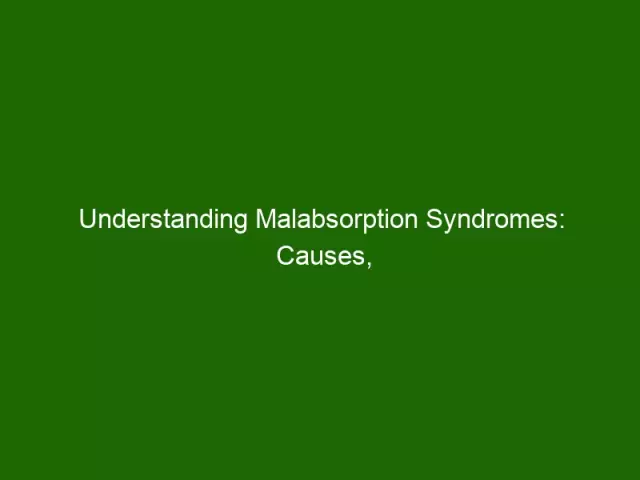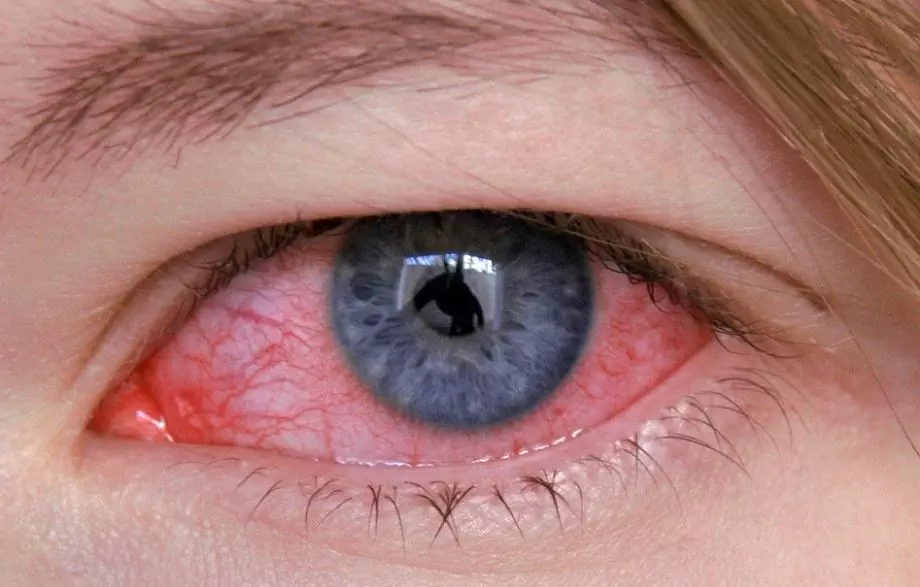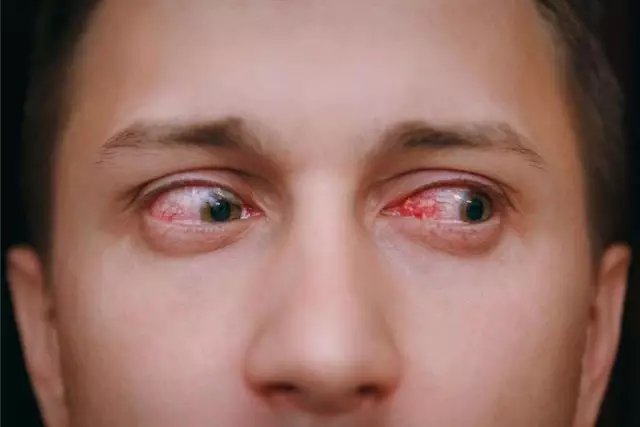- Author Rachel Wainwright [email protected].
- Public 2023-12-15 07:39.
- Last modified 2025-11-02 20:14.
Malabsorption

Malabsorption in the intestine is called malabsorption syndrome in medicine. This disease occurs due to changes in the digestive-transport function of the small intestine, which provoke metabolic disorders. The disease is characterized by a number of clinical manifestations, such as weight loss, diarrhea, multivitamin deficiency, etc. Malabsorption is congenital or acquired as a result of various diseases of the gastrointestinal tract (liver cirrhosis, short bowel syndrome, chronic pancreatitis, and others).
Malabsorption syndrome, symptoms
Malabsorption has quite specific symptoms by which it is possible to determine the presence of this disease in a person. The most common among them are:
- Diarrhea;
- Steatorrhea;
- Asthenovegetative syndrome;
- Various disorders due to vitamin deficiency.
In patients with malabsorption, there are disturbances in the work of the intestines, bloating, rumbling and pain in the abdomen appear. Pain is observed, as a rule, in the upper part and can radiate to the lower back. The amount of feces in this disease increases markedly, and it acquires a watery consistency, and sometimes an oily sheen. This phenomenon is called steatorrhea.
The manifestation of asthenovegetative syndrome in malabsorption is characterized by disorders in the nervous system of a sick person. Fatigue, apathy and general weakness of the body are the main symptoms of the syndrome, caused by a lack of substances necessary for the proper functioning of the nervous system.
Malabsorption syndrome is also manifested by pathological processes of the skin, which are provoked by a lack of vitamins and substances. So, such violations can lead to eczema, dryness and age spots on the skin, dermatitis and hair loss, brittle and darkened nails. In addition, a lack of a specific vitamin or substance can cause a separate problem:
- Lack of vitamin K often leads to subcutaneous hemorrhages and the appearance of red spots on the surface of the skin;
- Lack of vitamin E negatively affects the nervous system, provoking various neuropathies;
- Vitamin A deficiency provokes a disorder of twilight vision;
- Lack of vitamin D contributes to the development of muscle pain and osteoporosis;
- Low protein content in patients leads to the accumulation of fluid in the abdominal cavity;
- Deficiencies in zinc and copper cause skin rashes.
Also, one of the most important symptoms of malabsorption is rapid weight loss. In addition, patients sometimes have impaired sexual functions, since this syndrome leads to a decrease in libido and even impotence. In women, menstrual irregularities, as well as the occurrence of amenorrhea, are often observed with malabsorption syndrome.
Galactose malabsorption
Speaking about such a pathology as malabsorption syndrome, it is necessary to separately highlight its type, called glucose-galactose malabsorption. This is a rare genetic disease that is inherited and characterized by impaired absorption of monosaccharides in the gastrointestinal tract. The development of the disease is caused by a mutation in the structure of a gene that is responsible for the synthesis of a transport protein. It is he who moves glucose and galactose through the walls of the small intestine.
Glucose-galactose malabsorption in children leads to impaired tissue respiration, and therefore there is a delay in physical and mental development. This is due to the fact that red blood cells are deprived of the ability to carry oxygen and the concentration of glucose in the child's blood decreases, and galactose metabolites gradually accumulate.
Their concentration in the heart, brain, kidneys, lens of the eye leads to damage to these organs. Malabsorption in children can provoke cirrhosis of the liver if the metabolite accumulates in this organ or in the brain.
Galactose malabsorption can also be manifested by the accumulation of metabolites in the intestinal folds and in the kidneys, which prevents the entry of amino acids into the bloodstream. When the mucous membrane of the small intestine is irritated by monosaccharides, the amount of fluid in it increases, therefore, the absorption of nutrients is hampered. All these phenomena lead to the development of such a characteristic symptom of galactose malabsorption as diarrhea.
Malabsorption treatment
Treatment of malabsorption involves, first of all, the elimination of the disease that caused the syndrome and the accompanying dysbiosis. In addition, it is aimed at correcting the diet with the help of diets, as well as eliminating electrolyte disturbances and motor changes in the digestive system, correcting pathologies of protein metabolism and vitamin deficiency.
Thus, malabsorption treatment can be divided into three main types:
- Diet therapy;
- Medical method of treatment;
- Surgical method.

Diet therapy for malabsorption primarily involves eating foods high in protein. Fats in the diet of a sick person, especially if there is such a symptom of the disease as steatorrhea, should be reduced by almost half. Often, for the treatment of malabsorption, doctors recommend the use of various special mixtures, vitamins and trace elements.
The medical method of treating the disease, in turn, includes:
- Preparations correcting the lack of vitamins and minerals;
- Antibacterial drugs;
- Antacid therapy;
- Hormone therapy;
- Choleretic drugs;
- Antidiarrheal and antisecretory drugs;
- Pancreatic enzymes.
Surgical intervention for malabsorption is required in especially severe cases and is aimed at eliminating the disease that provoked the development of this syndrome in the patient.
YouTube video related to the article:
The information is generalized and provided for informational purposes only. At the first sign of illness, see your doctor. Self-medication is hazardous to health!






